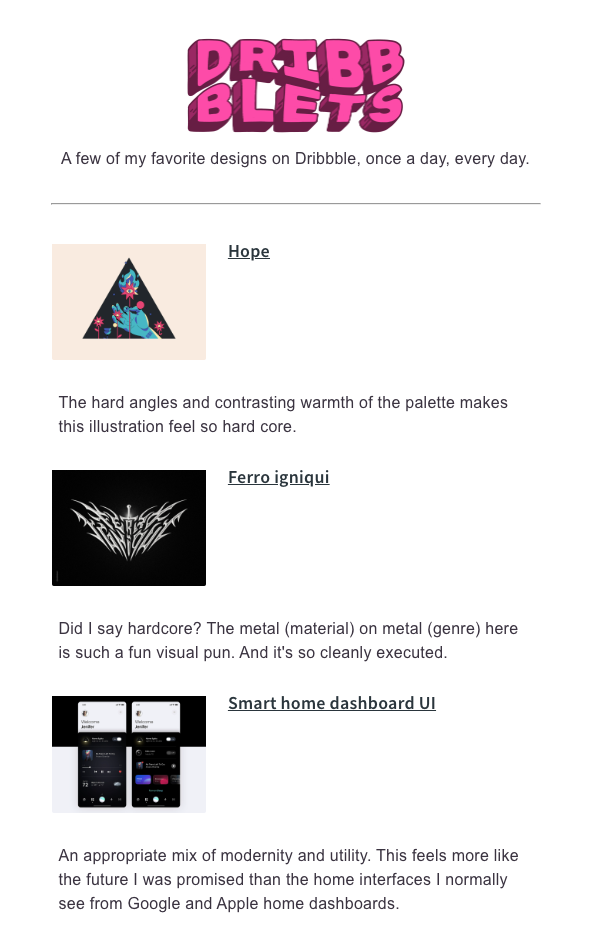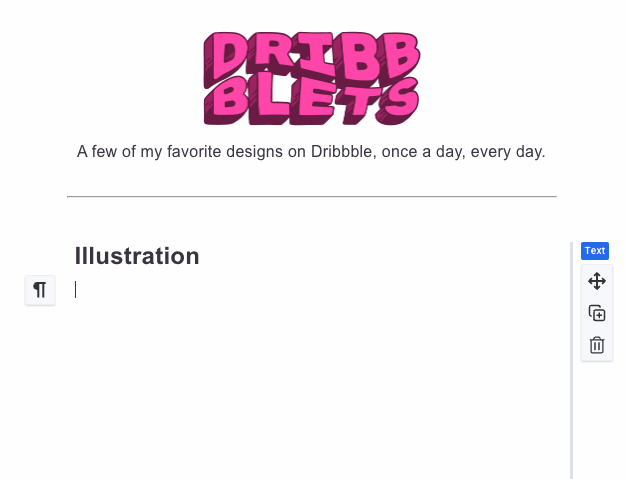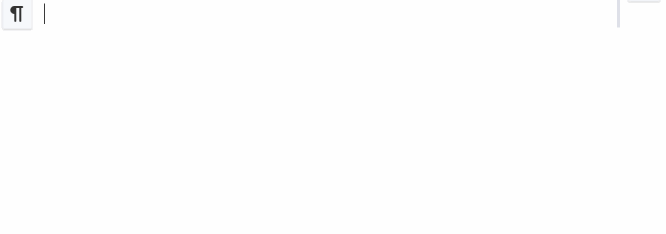How to create a low-effort, high impact curated newsletter for any industry
By Chris Vasquez March 7, 2023
Everyone’s probably telling you that you need an email list, and they’re right. But it can feel overwhelming to think about creating another piece of content. I’ve got a secret for you, if you keep up to date with your industry news – reading articles, participating in Slack or other communities, lurking on Twitter – you’re already sitting on enough content for a newsletter.
This type of email is called a curated newsletter.
What is a curated newsletter
Curated newsletters are simply a collection of helpful links. Their value is that they filter down all of the noise on the internet into the most interesting information in a specific area. They do the work of pre-qualifying content for your readers. So when they open your newsletter they can feel confident that the stories are relevant to them.
There are three main benefits for creating curated newsletters:
- They are easy to create
- They’re perfect for writers and non-writers
- They have natural potential for partnerships and monetization

How to create a curated newsletter
1. Create a repository of interesting information
The first step to creating a curated newsletter is finding sources of interesting content in the area you plan to write about. Here are a few of the places I find content (I’d love to hear what you think I missed in the comments).
- Other Newsletters – Subscribe to newsletters in your own space and in related industries. You can learn a lot from them and get the benefit of finding thought leaders and seeing interesting things these other newsletter creators do to gain and keep attention. Newsletter directories like InboxReads and Newsletters.co are a good place to start looking for newsletters.
- Industry Events – Look at who speaks at and sponsors industry events. If they’re speaking at an event, they presumably have something interesting to say. If they’re sponsoring the event, they’re likely platforming people with something interesting to say on their blog or site.
- Twitter – One of the first things I do when I find an interesting author or creator in one of the channels on this list is look for their Twitter. I don’t think a day goes by when I don’t at least see one interesting thing on Twitter.
- Podcasts – There is a podcast about everything, from brand strategy to HVAC. Their hosts and guests often have interesting stories to tell of what’s working and what’s not.
- TikTok – TikTok is not just for pranks and dances, it’s full of all sorts of helpful, digestible content you could be linking to. TikTok was one of the main places I learned how to actually use generative AI tools.
2. Pick an email tool
You want to make your template as simple as possible to make the creation process as easy for you and the reading process easy for your readers. You’re going to want to pick an email tool that makes the creation process easy (AWeber is the easiest way to create these types of emails – you can sign up for free right now). Some things to look for:
- A no-code visual builder. AWeber’s message editor makes it easy to make great looking emails without ever having to think about code. You can do everything using your mouse and keyboard and have access to tons of templates and elements.
- Tools specifically for curators. AWeber built Link Previews to remove almost all of the manual work of curating a newsletter. All you have to do is paste in a link and click to transform it and you have a well styled, linked up block of content.

3. Commit to a schedule
This is a big one. You’re not likely to get super popular right off the bat. Don’t get discouraged. Building an audience is one of those things where consistency is key.
With that in mind, it’s important to be realistic about your schedule. I’d recommend you don’t start sending any more frequently than once a week. If you find that your audience wants more, and you’re able to make time for more, then send more frequently.
4. Write and send your newsletter
As long as you have a good repository of sources from step one set up, this is an easy step.
With my newsletter, I find it easiest to drop links into my newsletter draft in AWeber as I read interesting content. Then, when I’m preparing to send, I can just review the links I’ve added since my last edition, keep the ones that still interest me, and delete the rest.
Benefits of a curated newsletter
The perfect format for non-writers
For most people (especially those who aren’t natural writers), the act of putting together a list of links is simpler than writing an interesting piece of original content. That’s not to say it’s no work at all; but if you’re already actively reading about your industry, creating a curated newsletter adds very little additional work to your week.
I have a curated newsletter that’s all about interesting visual design. My process for building this newsletter is whenever I see something that piques my interest I add it to a new draft in my AWeber account. When it comes time to send, I just spend a few minutes going through the links I’ve saved and cut the least interesting stories.
You can easily follow this same process in your AWeber account, or by saving your links in a Google doc, or in your notes app.
I find this process much easier in AWeber because you can automatically turn links into fully styled blocks of content. You don’t have to do any of the manual fiddling that wastes time in other tools.
Check out how easy it is below.

A great way to network with industry experts or influencers
Because this newsletter format relies on linking to content other people have created, links from partners or sponsors aren’t as disruptive as they might be in editorial or letter-style newsletters.
One of the best things you can do when you start your newsletter is to shout out to people you include on social media sites or to even email them directly to give them props for their content and share your newsletter that featured them.
This is a great way to make connections with industry experts or influencers. You’d be surprised how many partnerships start by simply sharing how much you appreciate someone’s content.
Ads fit naturally with your content
Since your curated newsletter is a digest of links to other sites, posts, and products, sponsored content easily fits in without clashing with the rest of your newsletter.
And as long as you have a consistent focus on the type of content you share (eg. the best product design inspiration, or fitness equipment that fits in your life, etc) you should be able to find complimentary sponsors fairly easily once you have an engaged audience. All you have to do is Google your product mission statement and see what ads are part of the search results.
Earn money through referrals
Similar to running ads, affiliate links fit really easily in curated newsletters. Like above, just make sure you’re finding complimentary products that are interesting. Treat the affiliate products you include in your newsletter like any other content. Make sure it’s something you’re proud to represent, and something your audience wouldn’t feel blindsided by.
Now let’s talk about a few challenges, and how to overcome them.
You have to be interested to be interesting
I’ve learned something when writing about creators in general. The most interesting content comes from the most curious people. They’re able to come up with things that make you think because they’re constantly consuming things that make them think.
The same is true for curated newsletters. For you to create something that’s interesting to other people, you need to be consuming content that actually caught your attention and helping you. If you’re already actively reading content and following people with interesting ideas in your industry, this shouldn’t be a challenge for you.
If you’re not, I’d suggest you start. Not just so you can create a newsletter, but because it’ll invariably make you better at your job.
You can’t build a brand off someone else’s content
Creating any sort of personal connection to your audience can be tough when you’re just sharing a list of links. The better the relationship you have with your readers, the more likely they are to trust you. Trust leads to folks recommending you to their friends. Trust also leads to readers putting more stock in your recommendations, which makes you more valuable to advertisers.
A small time investment that can add personal flair to your curated newsletter is to start each one off with a single paragraph of commentary. It could be a personal story of something that happened in your work life that you learned from, or it could be a short sentence or two on why you chose the links you did this week (this is easiest if there’s some sort of theme).
There’s nothing blocking you from starting a newsletter today. Like we just walked through, these curated emails are easy to make and are a simple first step to take into the newsletter world. You can create a free AWeber account and have your first edition done in a matter of minutes. Just dig up the last couple articles or tweets you’ve shared with your colleagues or social network, paste them into AWeber, and you’re ready to go.
When I look at the pros and cons, curated newsletters net out as a “just do” for anyone looking to start an industry newsletter — especially if you don’t think of yourself as a writer or don’t have a ton of time.
Leave a link to your new curated newsletter in the comments and I’ll be your first subscriber.
 87% off ends soon!
87% off ends soon! 
